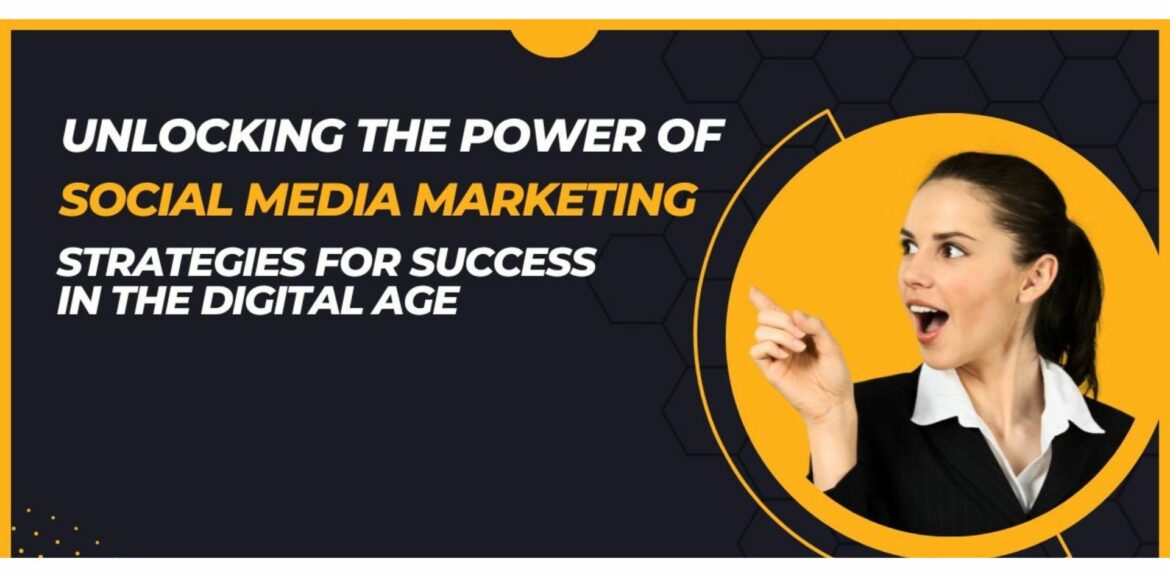Social media marketing nowadays has changed how businesses communicate and interact with customers. The popularity of platforms such as Facebook, LinkedIn, Instagram, Twitter, and TikTok provides new opportunities for businesses to engage with customers, raise brand recognition, and increase sales. Learning the many sorts of social media marketing will allow you to strategically leverage the potential of these platforms to expand your business.
Understanding Social Media Marketing

Social media marketing includes utilising social media platforms to engage with your target audience, build your brand, improve sales, and generate website traffic. This includes strategies like posting high-quality material on your social media pages, engaging with your followers, running social media ads, and more.
We will look at several social media marketing strategies and show how they may be used to promote your business effectively.
1. Content Marketing
Content marketing is one of the foundations of social media marketing. This strategy includes generating, publishing, and sharing helpful content for your intended audience. It's important to get familiar with your audience's requirements and interests to provide them value. Top-quality content can take many forms, including videos, blog entries, carousels, infographics, podcasts, and other social media updates.
Why it works: Quality content creates authority in your area, fosters relationships with your audience, and promotes sharing and participation. For example, a fashion boutique may use Instagram to offer style recommendations or YouTube to generate video tutorials.
Best practices: Create content that addresses problems or offers solutions to problems. Consistency in publishing and developing a consistent brand voice are also important.
2. Influencer Marketing
Influencer marketing makes use of endorsements and product mentions from influencers, who are persons with a large social following who are considered as experts in their field. Influencers may rapidly increase your brand's visibility and reputation, especially if they have a large following that matches your target demographic.
Why it works: Customers value suggestions from people they follow more than traditional marketing. Collaboration with influencers allows marketers to tap into the influencer's existing community.
Best practices: Choose influencers that share your brand's beliefs and maintain an authentic engagement with their audience. Micro-influencers (10,000 to 100,000 followers) are frequently more efficient and cost-effective than macro-influencers.
3. Social Media Advertising

Paid campaigns are used to market your business, products, or services on social media. advertisements can appear in various media, including articles, videos, carousel advertisements, and sponsored posts.
Why it works: Social media platforms provide effective targeting based on demographics, interests, habits, and geography. This accuracy guarantees that your adverts reach the most appropriate consumers, boosting ROI.
Best practices: Use captivating images and intriguing copy. Test various ad styles and use A/B testing to find which advertisements are most effective with your target demographic
4. Social Media Contests and Giveaways
Contests and freebies are great for increasing engagement and broadening your reach. They motivate user engagement by providing something worthwhile in exchange.
Why it works: People enjoy winning things, and competitions may help boost social media engagement, followers, and business visibility.
Best practices: Ensure the contest regulations are straightforward and easy to follow. Use a call-to-action to encourage sharing and engagement, and choose incentives consistent with your branding.
5. User-Generated Content (UGC)
User-generated content entails utilizing content contributed by your audience. This might include photographs, videos, reviews, or other material highlighting your product or service.
Why it works: User-generated content (UGC) acts as legitimate endorsements from real customers, helping to develop trust and authenticity in your business. It also generates new material for your social media accounts.
Best practices: Use branded hashtags and UGC campaigns to encourage followers to share their product-related experiences. Always recognize and credit the original artists.
6. Social Media Takeovers

A social media takeover occurs when a visitor, often an influencer or noteworthy figure, briefly takes control of your social media accounts to generate content and connect with your audience.
Why it works: It offers your followers new viewpoints and may attract the guest's followers to your page.
Best practices: Announce the takeover ahead of time to increase anticipation. Set explicit goals and instructions for the visitor to ensure the material is consistent with your brand's values.
7. Live Streaming
Live streaming refers to the broadcast of live video material over social media networks. It’s an engaging method of communicating with your audience in real-time, answering questions, and promoting events.
Why it works: Live video engages viewers and conveys a feeling of immediacy and authenticity. It’s ideal for product introductions, behind-the-scenes footage, Q&A sessions, and more.
Best practices: Promote your videos and live broadcasts beforehand, prepare adequately, and communicate with your audience throughout the session to keep them interested.
8. Social Listening
Social listening is monitoring social media channels for mentions of your company, rivals, and relevant keywords. This helps to understand the public mood and industry trends.
Why it works: It enables your brand to reply swiftly to favorable or negative comments while also measuring the efficacy of your initiatives.
Best practices: Use social listening tools to obtain ideas and alter your social media approach accordingly.
9. Community Building
Building a community entails providing an environment where your audience may interact with one another and your business. Facebook, LinkedIn, and Reddit groups are examples of places where these relationships can be formed.
Why it works: A dedicated community allows for more engagement and loyalty from your viewers. It promotes continuing engagement beyond individual pieces.
Best practices: Form a community around common interests or difficulties relevant to your brand. Engage often, foster meaningful debates, and give members special information or rewards.
Conclusion
A strong social media marketing plan is critical for brand expansion. Nonetheless, social media marketing success depends on understanding your audience, providing high-quality and engaging content, using the proper influencers, and making data-driven choices.
Combining the strategies discussed, content marketing, influencer marketing, paid advertising, contests and giveaways, user-generated content, social media takeovers, live streaming, social listening, and community building, you can increase your brand’s online presence and foster meaningful connections with your target audience. Begin by determining which methods are most effective for your audience and company objectives, and then change your plan based on your findings and feedback.
By being adaptive and staying on top of social media trends, you can negotiate the complexity of social media marketing and position your company for long-term success.









